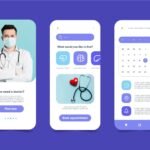Introduction
Health Information Technology (Health IT) is revolutionizing modern healthcare by improving efficiency, enhancing patient care, and streamlining medical workflows. From Electronic Health Records (EHRs) to Artificial Intelligence (AI)-driven diagnostics, Health IT is transforming the way healthcare providers manage patient data and deliver care.
This article explores the role of Health IT in modern healthcare, its benefits, challenges, and emerging trends. Additionally, we answer common questions about Health IT to provide a comprehensive understanding of its impact on the medical field.
What is Health IT?
Health IT refers to the use of technology, software, and systems to store, manage, and analyze health-related information. It encompasses various digital tools that help healthcare organizations optimize patient care, improve decision-making, and enhance overall healthcare efficiency.
Key Components of Health IT:
- Electronic Health Records (EHRs) – Digital records that store patient medical history, prescriptions, and treatment plans.
- Telemedicine Platforms – Enable remote consultations, improving accessibility to healthcare.
- AI and Machine Learning in Healthcare – Assist in disease diagnosis, personalized medicine, and predictive analytics.
- Wearable Health Devices – Track real-time patient data for continuous monitoring.
- Blockchain in Healthcare – Secures patient records and enhances data privacy.
- Big Data Analytics – Helps healthcare providers identify trends and improve patient outcomes.
Benefits of Health IT in Modern Healthcare
Health IT has significantly improved the quality, accessibility, and affordability of healthcare services. Below are some of its major benefits:
1. Enhanced Patient Care and Safety
- EHRs provide quick access to patient history, reducing errors and improving treatment accuracy.
- AI-powered decision-making helps detect diseases early and recommends personalized treatments.
- Digital tools like remote monitoring devices enable continuous health tracking.
2. Improved Healthcare Efficiency
- Automated workflows reduce administrative burdens on healthcare staff.
- AI-driven chatbots assist in scheduling appointments and answering patient inquiries.
- Telemedicine reduces wait times and hospital overcrowding.
3. Cost Reduction in Healthcare
- Digital prescriptions and automated billing minimize paperwork and reduce errors.
- AI-driven diagnostics improve accuracy, reducing unnecessary tests and hospitalizations.
- Remote monitoring reduces emergency visits and hospital readmissions.
4. Enhanced Data Security and Privacy
- Blockchain technology ensures secure and tamper-proof patient records.
- Cloud-based solutions provide encrypted storage for sensitive health data.
- Access control mechanisms restrict unauthorized data breaches.
5. Streamlined Communication and Collaboration
- Health IT enables seamless communication between doctors, nurses, and specialists.
- EHRs integrate patient data across healthcare institutions for coordinated care.
- AI-powered analytics provide real-time insights for medical teams.
Challenges in Implementing Health IT
Despite its numerous advantages, the adoption of Health IT faces some challenges:
1. Data Privacy and Cybersecurity Concerns
- Healthcare organizations are prime targets for cyberattacks.
- Strict compliance with HIPAA and GDPR is required to safeguard patient data.
- Regular security updates and employee training are necessary.
2. High Implementation Costs
- EHR systems, AI tools, and IT infrastructure require significant investment.
- Small healthcare providers may struggle with adoption due to budget constraints.
3. Resistance to Technology Adoption
- Healthcare professionals may require training to efficiently use digital systems.
- Fear of job displacement due to AI-driven automation.
4. Interoperability Issues
- Different healthcare IT systems may not be compatible with each other.
- Lack of standardized data formats hinders seamless integration.
5. Ethical and Legal Issues
- AI in healthcare raises ethical concerns regarding biased decision-making.
- Legal frameworks must evolve to address emerging digital health challenges.
Emerging Trends in Health IT
The future of Health IT is driven by cutting-edge innovations that enhance patient care and medical research. Below are some key trends:
1. AI and Machine Learning in Healthcare
- AI-driven diagnostics improve accuracy and speed of disease detection.
- Machine learning algorithms predict patient health trends and optimize treatments.
2. Blockchain for Secure Health Records
- Ensures secure, decentralized, and tamper-proof medical data management.
- Reduces fraud in health insurance claims and prescription tracking.
3. Expansion of Telemedicine and Remote Monitoring
- 5G technology enhances real-time telehealth consultations.
- Wearable devices continuously monitor patients and provide real-time data.
4. Internet of Medical Things (IoMT)
- Smart devices connect patients, doctors, and healthcare systems for real-time monitoring.
- IoMT reduces hospital visits by allowing remote patient care.
5. Personalized Medicine with Genomics
- AI-driven genetic analysis tailors treatment plans to individual patients.
- Personalized drug development based on genetic profiles.
6. Cloud-Based Healthcare Systems
- Secure storage of massive patient data with easy access for authorized professionals.
- AI-powered analytics provide deeper insights into population health.
FAQs
Q1. How does Health IT improve patient outcomes?
Health IT enhances patient care through electronic records, AI-powered diagnostics, remote monitoring, and streamlined communication among healthcare professionals.
Q2. What are the risks associated with Health IT?
Health IT faces challenges like cybersecurity threats, data breaches, high implementation costs, and interoperability issues.
Q3. How does AI contribute to Health IT?
AI assists in early disease detection, predictive analytics, robotic surgeries, and virtual health assistants that improve healthcare efficiency and accuracy.
Q4. What role does telemedicine play in modern healthcare?
Telemedicine enables remote consultations, reducing hospital visits, improving accessibility, and ensuring timely medical intervention.
Q5. How can healthcare organizations ensure data security?
Healthcare organizations can adopt blockchain technology, encryption protocols, multi-factor authentication, and regulatory compliance measures to safeguard patient data.
Conclusion
Health IT is playing a crucial role in modern healthcare by enhancing patient care, improving efficiency, and advancing medical research. While challenges such as data security, high costs, and interoperability issues exist, the benefits of Health IT far outweigh the drawbacks.
As technology continues to evolve, innovations such as AI, IoMT, blockchain, and personalized medicine will further transform healthcare, making it more accessible, efficient, and patient-centric. Healthcare providers and policymakers must embrace Health IT advancements to ensure a future of smarter, data-driven, and secure healthcare systems.





